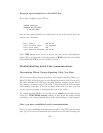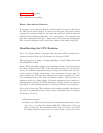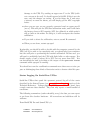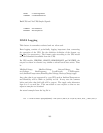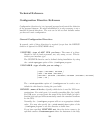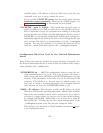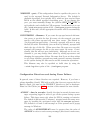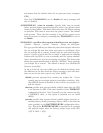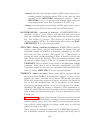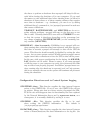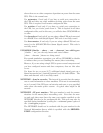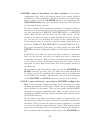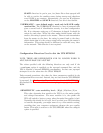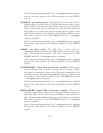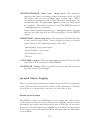minutes specifies that apcupsd should prohibit logins when the re-
maining runtime in minutes reaches 110% or less than the value
specified on the MINUTES configuration directive. Thus if
MINUTES is set to 3, apcupsd will prohibit logins when the
remaining runtime is less than 3 minutes (3 X 110% = 3).
always causes apcupsd to immediately prohibit logins when a power
failure occurs. This will also enable the ANNOY feature.
BATTERYLEVEL <percent of battery> If BATTERYLEVEL is
specified, during a power failure, apcupsd will halt the system
when the remaining battery charge falls below the specified percent-
age. The default is 5 percent. This directive is ignored for dumb
(voltage-signalling) UPSes. To totally disable this counter, set BAT-
TERYLEVEL -1 in your apcupsd.conf file.
MINUTES <battery runtime in minutes> If MINUTES is specified,
during a power failure, apcupsd will shutdown the system when the
remaining runtime on batteries as internally calculated by the UPS
falls below the time specified. The default is 3. This directive is
ignored for dumb (voltage-signalling) UPSes. It should be noted that
some UPSes report an incorrect value for remaining runtime when
the battery is fully charged. This can be checked by examining the
TIMELEFT value as printed in the output of an apcaccess status
command. If the value is zero or otherwise unreasonable, your UPS
is probably broken. In this case, we recommend that you disable this
timer by setting MINUTES -1 in your apcupsd.conf file.
TIMEOUT <time in seconds> After a power failure, apcupsd will halt
the system when TIMEOUT seconds have expired. A value of zero
disables this timer. Normally for all Smart UPS models and dumb
UPSes with cables that support low battery detection, this should be
zero so that the shutdown time will be determined by the battery
level and/or remaining runtime (see above) or in the case of a voltage-
signalling UPS, when the battery is exhausted. This command is re-
quired for dumb UPSes that do not provide a battery exhausted signal
(only testing can determine this point). For more information, see the
Testing (see
Testing Apcupsd) section of this manual. This timer can also be useful
if you want some slave machines to shutdown before other machines to
conserve battery power. It is also useful for testing apcupsd because
you can force a rapid shutdown by setting a small value (e.g. 60) and
pulling the plug to the UPS.
When apcupsd is running in master mode (UPSCLASS netmaster),
and a shutdown condition is determined, apcupsd will notify each of
168



